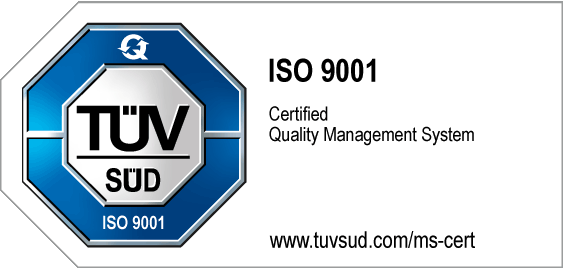Trend Management – At a Glace
| What is Trend Management? | Trend management is the systematic handling of trend knowledge in order to identify early signals of change and use them strategically. It helps companies actively shape transformation and unlock opportunities for innovation and growth. |
| How are trends identified? | Trends are identified through systematic trend management, in which relevant developments are continuously monitored and documented. With the help of monitoring, analysis, and targeted evaluation of the insights gained, opportunities and risks can be detected at an early stage. |
| What are the most important trend management methods? | The most important trend management methods include trend analysis or trend scouting to systematically identify, evaluate, and visualize developments. In addition, methods such as scenario technique and the Delphi method are applied to support well-founded decisions in strategy and innovation. |
| What are the benefits of trend management? | Trend management provides companies with a deeper understanding of change and relevant developments in their field. Insights from trend studies enable early exploitation of opportunities and support well-informed strategic decision-making. |
Was versteht man unter Trendmanagement?
Trend management is the systematic process of identifying, analyzing, and managing trends that influence markets and business. It enables organizations to detect relevant trends at an early stage and translate them intoopportunities for growth and innovation. By combining data driven insights with expert knowledge, companies can better anticipate shifts in customer behavior, technologies, and industries. This proactive approach helps to reduce uncertainty and prepare for upcoming challenges in dynamic environments.
At the same time, trend management supports long-term strategic planning by aligning business activities with emerging developments. It ensures that organizations do not only react to change but actively shape it through informed decision-making.
Managing trends allows companies to strengthen competitiveness, identify risks early, and discover new market opportunities. By integrating systematic monitoring and analysis, businesses can transform complexity into clarity. In this way, trend management becomes a crucial tool for navigating uncertain futures and creating sustainable value.
How does the Trend Management Process work?
Trend management is a structured approach that turns early signals about change into actionable strategy. It helps organizations spot relevant developments in markets and business, assess their impact, and respond to opportunities and challenges with data-driven insights.
- Set scope and objectives: Define the time horizon, topics, geographic markets, stakeholders, and success metrics so the effort stays focused and decision-relevant.
- Scan the environment: Continuously monitor diverse sources (news, patents, social media, startups, academic research) to capture early signals.
- Collect and curate signals: Gather, tag and deduplicate findings in a central repository so raw inputs are searchable and comparable.
- Analyze and synthesize: Combine quantitative indicators and qualitative interpretation to detect patterns — use data-driven insights to build trend profiles.
- Validate with experts: Run workshops or interviews with domain experts, customers, and frontline teams to sense-check plausibility and timing.
- Prioritize trends: Assess each trend’s relevance to your business, likely impact, and probability; rank them against strategic priorities and challenges.
- Develop scenarios and implications: Create a few plausible futures and derive concrete implications for products, operations, and markets.
- Translate into strategy and roadmaps: Define initiatives, pilots, KPIs, owners, and timelines that connect trends to business actions.
- Pilot and implement: Run experiments to validate assumptions, iterate quickly, and scale successful initiatives into the core business.
- Monitor, learn and update: Keep the radar live: measure outcomes, capture lessons, and reassess trends regularly to close the feedback loop.
Goals of Trend Management
The goals of trend management are to help businesses anticipate change and actively shape their strategic direction. By systematically observing and analyzing relevant trends, organizations can transform uncertainty into opportunities for growth and innovation.
- Identify and understand relevant trends shaping markets and the creator economy
- Enable the team to make informed and coordinated strategic decisions
- Support investment planning by assessing risks and opportunities early
- Strengthen business resilience against external challenges and disruptions
- Foster innovation by translating trends into new products, services, and business models
- Create long-term value by aligning strategy with future market developments
Benefits of Trend Management
Trend management provides organizations with a structured way to navigate change and prepare for the future. By using data and foresight, businesses can develop strategies that strengthen both team performance and their role in society.
- Use data to identify and evaluate relevant developments early
- Develop innovative products, services, and business models aligned with future needs
- Enhance team collaboration and knowledge sharing across departments
- Strengthen leadership by making informed, forward-looking decisions
- Improve business performance through proactive adaptation to change
- Anticipate shifts in the world and turn them into opportunities
- Contribute positively to society by addressing social and environmental challenges
Essential Methods and Tools
Trend management uses various methods and tools to systematically capture, evaluate, and transfer changes into business practice. The goal is not only to identify trends but also to assess their relevance and impact on the organization. Depending on the need, digital solutions, visual representations, or analytical approaches are applied.
Trend Management Software
A trend management software helps companies systematically collect, structure, and evaluate trends. It fosters collaboration through centralized platforms and facilitates access to up-to-date information. This creates a solid foundation for strategic decisions and innovation processes.
Trend Radar
The trend radar is a visual tool that presents trends according to their relevance and time horizon. It helps to quickly gain an overview of opportunities and risks and to set priorities. In this way, companies can more easily integrate important developments into their strategy.
Trend Analysis
Trend analysis examines the causes, dynamics, and impacts of individual trends. Data from various sources is used to create well-founded forecasts. The goal is to derive courses of action and assess the significance of a trend for the company.
Trend Scouting
Trend scouting involves actively identifying new developments in markets, start-ups, research institutions, or social environments. It is often based on observation, networking, and direct exchange with relevant stakeholders. This enables companies to identify and seize new opportunities at an early stage.
Scenario Technique
The scenario technique is used to develop possible future images and to reflect on the effects of trends under different conditions. It supports companies in considering uncertainties and in developing robust strategies. This makes it possible to derive flexible options for action across different future scenarios.
Delphi Method
The Delphi method relies on expert knowledge to assess trends and their potential development. Through multi-stage surveys, a consensus is reached on relevance and probability of occurrence. It is particularly suitable when uncertain future issues need to be evaluated.
Trend Management Software for Companies
Trend management software enables organizations to systematically monitor market shifts, emerging technologies, and cultural movements such as the creator economy. It provides leaders with data-driven insights to anticipate change, seize opportunities, and mitigate risks. By offering a structured platform, it aligns strategic priorities with external developments and evolving customer expectations.
At its core, the software creates a central hub where employees, teams, and external partners can collaborate seamlessly. This shared space fosters open dialogue across departments and disciplines, ensuring that trend knowledge is transparent and accessible. As a result, scattered signals are transformed into actionable strategies that fuel innovation and strengthen competitiveness.
In addition, trend management software enhances accountability by documenting decisions, actions, and their outcomes over time. Leadership can track the impact of initiatives, refine strategies when needed, and foster a culture of continuous improvement. Ultimately, it empowers organizations to remain agile, meet rising expectations, and build long-term resilience in a rapidly changing environment.
Frequently asked questions and answers
Trend management tracks and interprets megatrends to reveal long-term shifts that influence markets, technology, and society. It translates these insights into concrete strategies that guide innovation and organizational transformation. By fostering accountability in decision-making, it ensures that trend-based actions create measurable value and sustainable impact.
The trend management process is a structured approach to identifying, analyzing, and prioritizing emerging developments that impact business and society. It combines monitoring, data-driven evaluation, and expert input to assess opportunities and risks. The insights are then translated into strategies and actions that strengthen competitiveness and long-term resilience.
Sources:
- Karama Kanoun, Jean-Claude Laprie. Trend Analysis. M. Lyu. Handbook for Software Reliability Engineering, McGraw-Hill, pp.401-437, 1996, 0-07-039400-8. ⟨hal-00761640⟩
- Conway, M.: A thinking futures reference guide. Foresight: an introduction. Melbourne 2015 (http://thinkingfutures.net)
- Gausemeier, J.; Fink, A.: Führung im Wandel. Carl Hanser Verlag, München, 1999 Dreborg, Karl H. (1996): Essence of Backcasting. Futures, Vol. 29, No. 9
- Hines, A., & Bishop, P. J. (Eds.). (2006). Thinking about the future: Guidelines for strategic foresight. Washington, DC: Social Technologiesnn• Voros, J. (2003). A generic foresight process framework. foresight, 5(3), 10-21
- Müller, A. W. (2008). Strategic Foresight-Prozesse strategischer Trend-und Zukunftsforschung in Unternehmen.
- Burmeister, K., & Schulz-Montag, B. (2009). Corporate foresight. Zukunftsforschung und Zukunftsgestaltung, 277-292.


